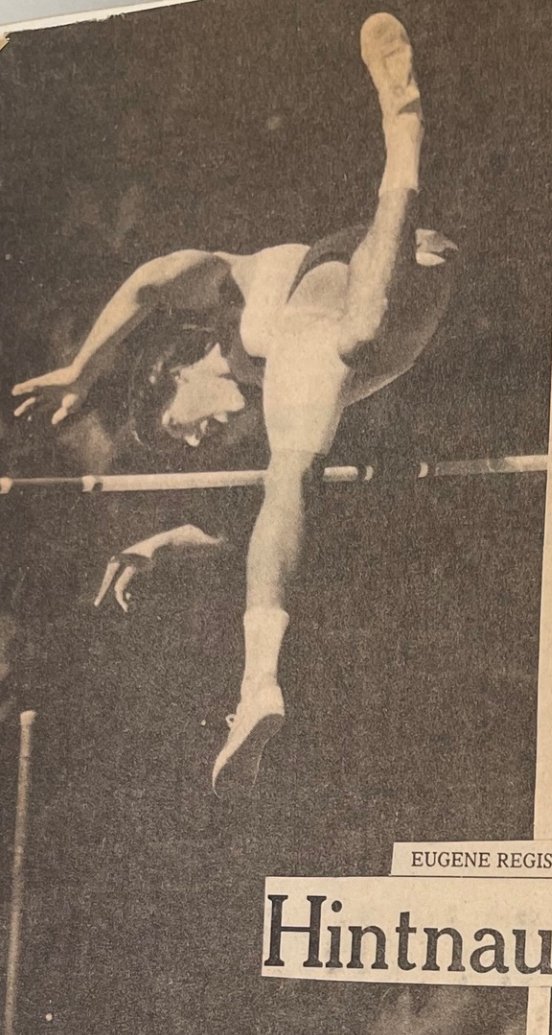Keeping Up with Athletes Featured in Hero Redefined
One thing I plan to use these regular blog posts for is to share updates about the athletes profiled in Hero Redefined.
That’s important, because the lives of these athletes are not static and confined to how a book encapsulates their past. Their future will surely reveal another series of interesting stories. Additionally, I had more tidbits and anecdotes from many of these athletes than I could put in a single book—and it struck me that some should resurface in a blog.
Here, then, are a few updates and back-stories from athletes in Hero Redefined—with my pledge that you’ll see more in blog posts to come.
William Flaherty, Commonwealth of Puerto Rico, Alpine Skiing, 2022 Winter Olympics
When I wrote Hero Redefined, William Flaherty was a student at Purdue University, pursuing an aerospace engineering degree.
Now comes an exciting next chapter in the life of this amazing young man, who in 2025 will become a 17-year survivor of HLH (hemophagocytic lymphohistiocytosis) and the 2008 transplant surgery that saved his life.
William’s mom, Ann, notified me a few months back that William received an internship from SpaceX. He will start in January and live in Brownsville, Texas, with older brother Charles, who already is working and excelling for the company.
David Moorcroft, Great Britain, 5000 meters, 1976, 1980, and 1984 Summer Olympics
Readers of Hero Redefined will learn about a series of successful careers David Moorcroft engaged in after his Summer Olympics running days had ended—including work as a track-and-field commentator for the British Broadcasting Corporation (BBC).
There was a delicious bit of BBC irony woven into a race last May, at the Prefontaine Classic in Eugene, Ore. A new British national record was set in this one, part of a high-profile match race pitting Great Britain’s newest middle-distance-running star, Josh Kerr, against Jakob Ingebrigtsen, who captured the 1500-meter gold medal at the 2021 Summer Olympics in Tokyo and remains the world record holder in the event.
On May 25, 2024, Kerr got the better of Ingebrigtsen, defeating him and setting a British national record of 3:45.34 in a duel between elite runners who surely will face off for years to come. When Kerr set the British record in the mile, I emailed Moorcroft, thinking he must have watched the race and wondering if he had been on the BBC broadcast of it.
David wasn’t—he actually watched the race from his laptop while he was in Scotland. But he shared with me that the Olympian who was commenting on the race for the BBC was none other than Steve Cram, who had held the mile record for decades until Kerr broke it! David shared that Cram’s commentary included his belief that it was about bloody time someone broke his record. Serendipity, for sure.
Tom Hintnaus, USA, Pole Vault, 1980 Summer Olympics (U.S. Boycotted)
Tom Hintnaus
In our interviews and communications for Hero Redefined, Tom Hintnaus had so many great stories there was simply no way I could fit them all into Chapter 7 of the book.
One fun story Tom shared was his groundbreaking role in starting “The Clap,” at legendary Hayward Field in Eugene. “The Clap” is the rhythmic and thunderous clapping that Hayward Field fans regularly initiate—and that track and field fans around the world now engage in as well—whenever a competitor in the field events such as long jump, triple jump, pole vault, and others get on the runway and need some momentum and jolts from the crowd. They may be trying to set a record, break one, reach down for a lifetime or personal best, or simply need to conjure up their best effort to win a particular event.
Tom said the clap first emerged at a dual meet at University of Oregon in 1980, when he needed some extra oomph for a pole vault he was attempting. Hintnaus went up to his pole-vaulting teammate, Jon Switzer, and “I told Jon I’m going to try to get the crowd into it!” He said Switzer wasn’t so sure it was a good idea, thinking Tom might look foolish if the crowd didn’t start clapping. They did, though, and a tradition was born.
There are other tales of how and where “The Clap” may have been born and/or popularized. USA triple jumper Willie Banks, who graciously wrote a quote of praise for Hero Redefined, seems to have initiated the clap-three-times-rapidly version of it, at a meet in Europe in 1981. But Hintnaus may well have been the one who started the overall tradition.
So, football and baseball fans may have “the Wave,” but track-and-field fans have “the Clap.” They can thank athletes like Tom Hintnaus and Willie Banks for that.
